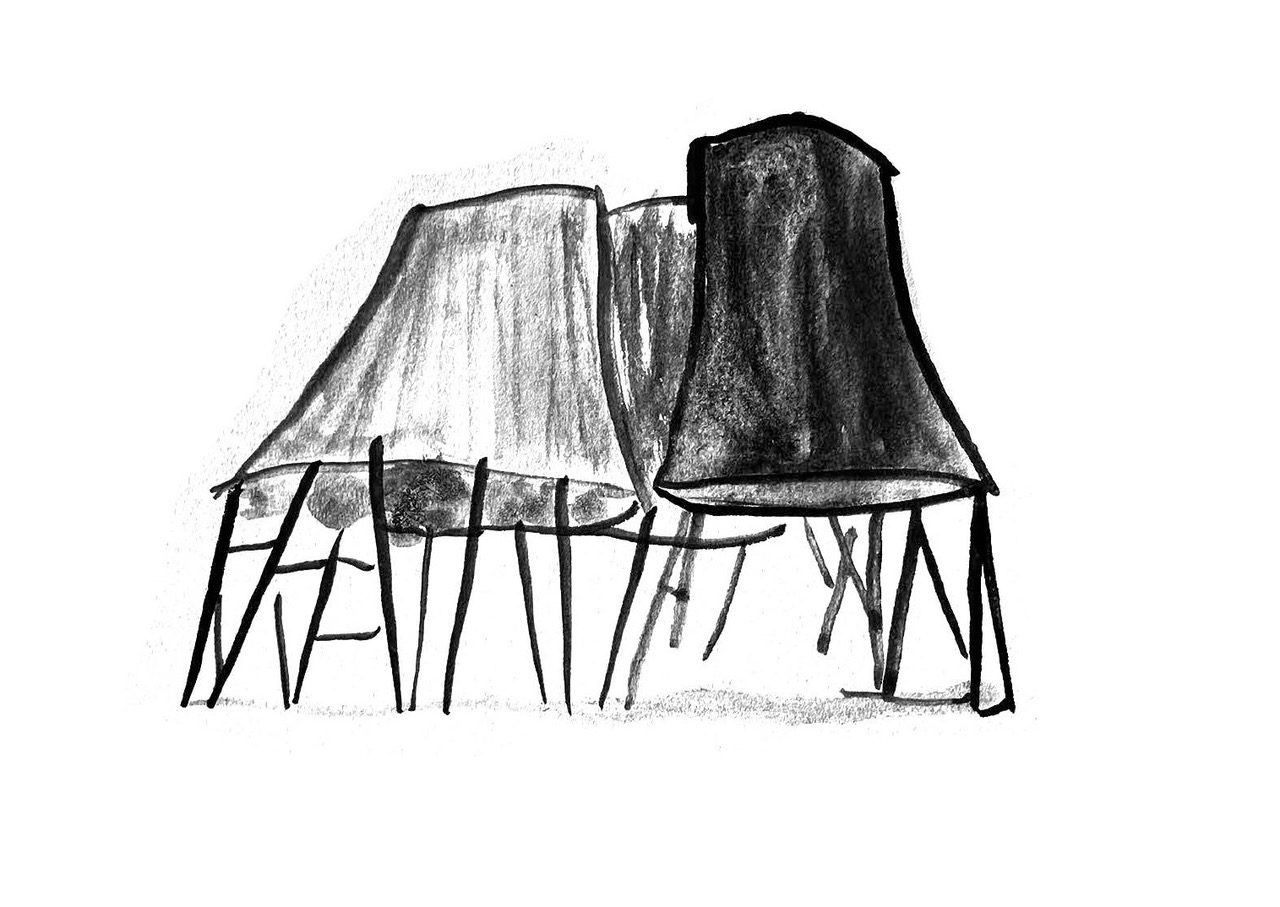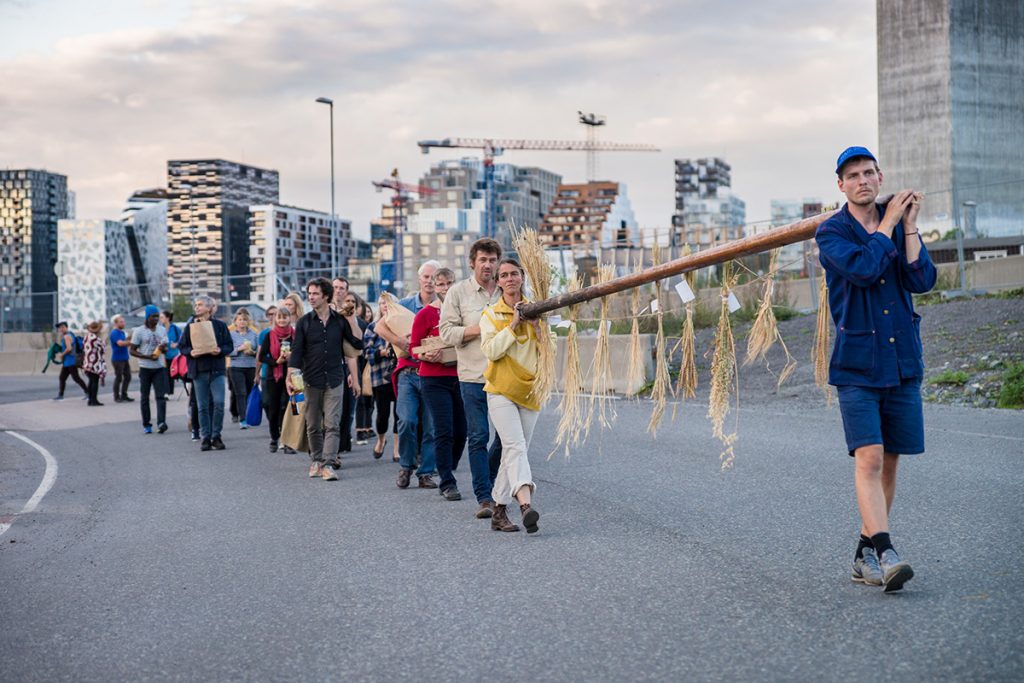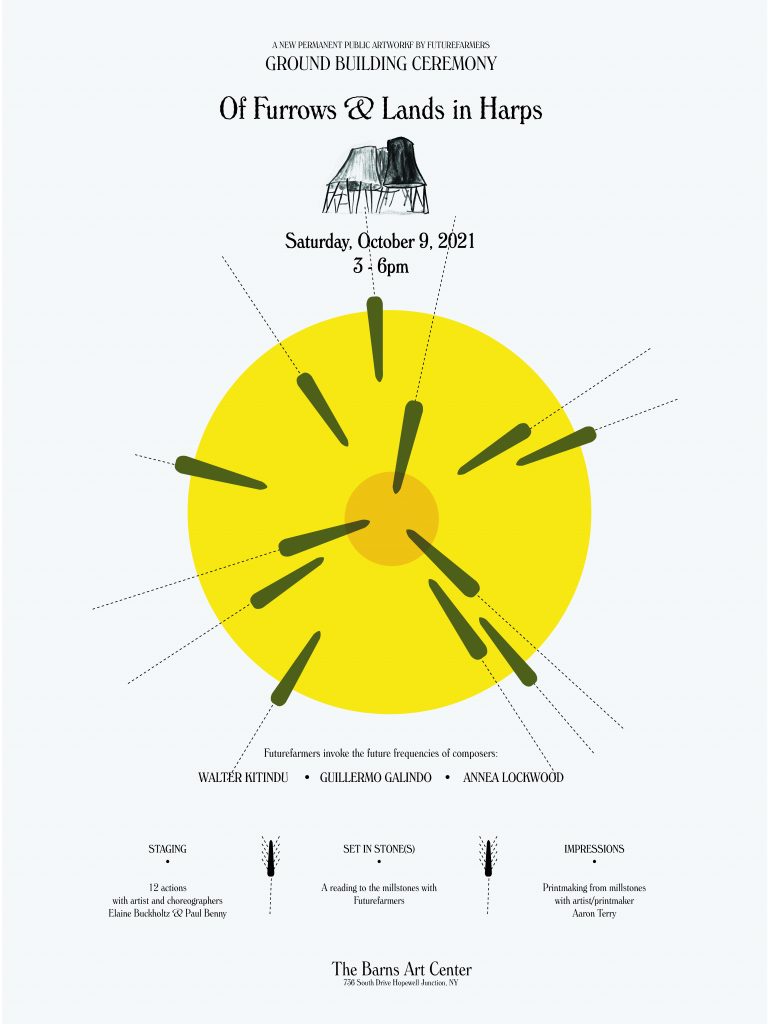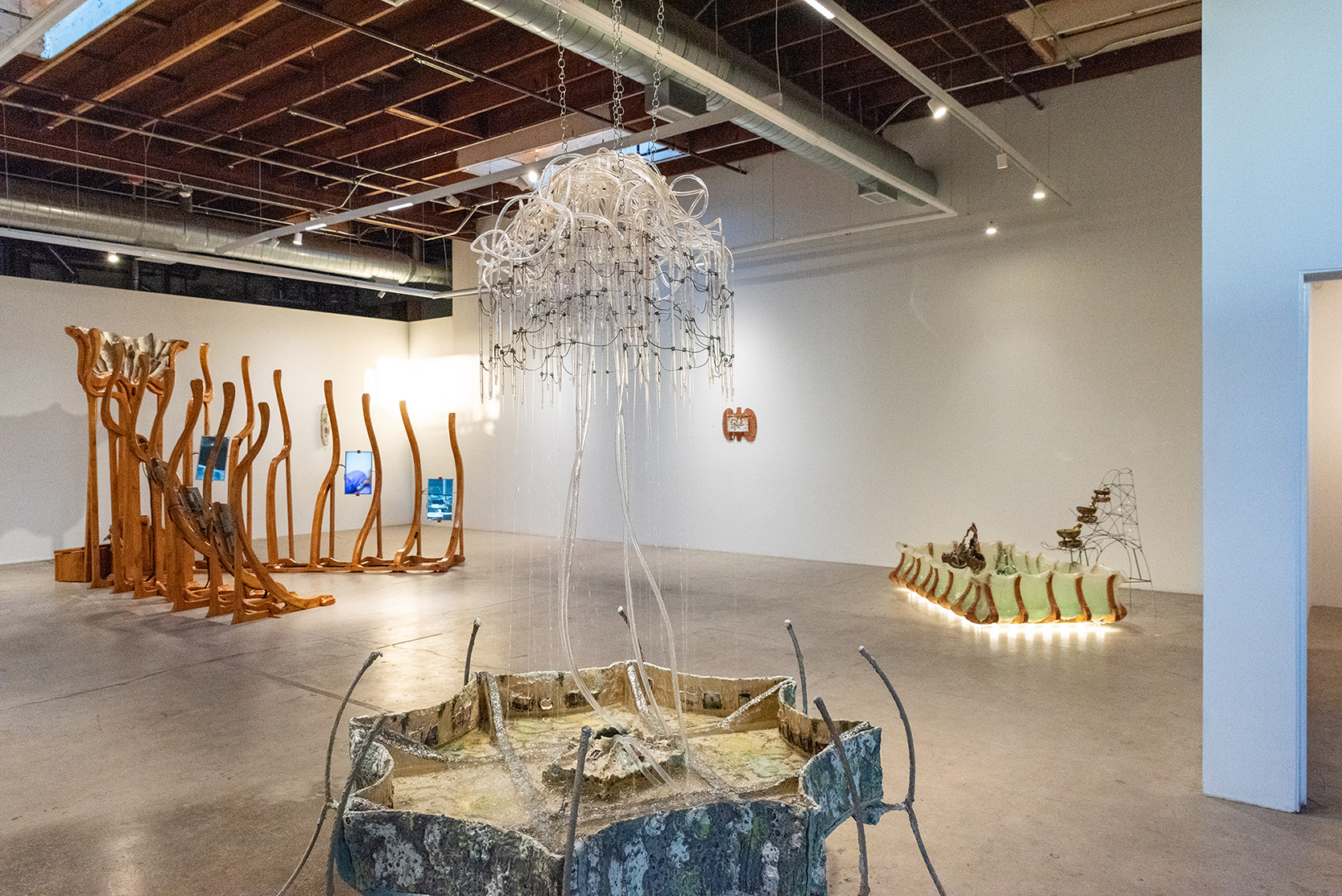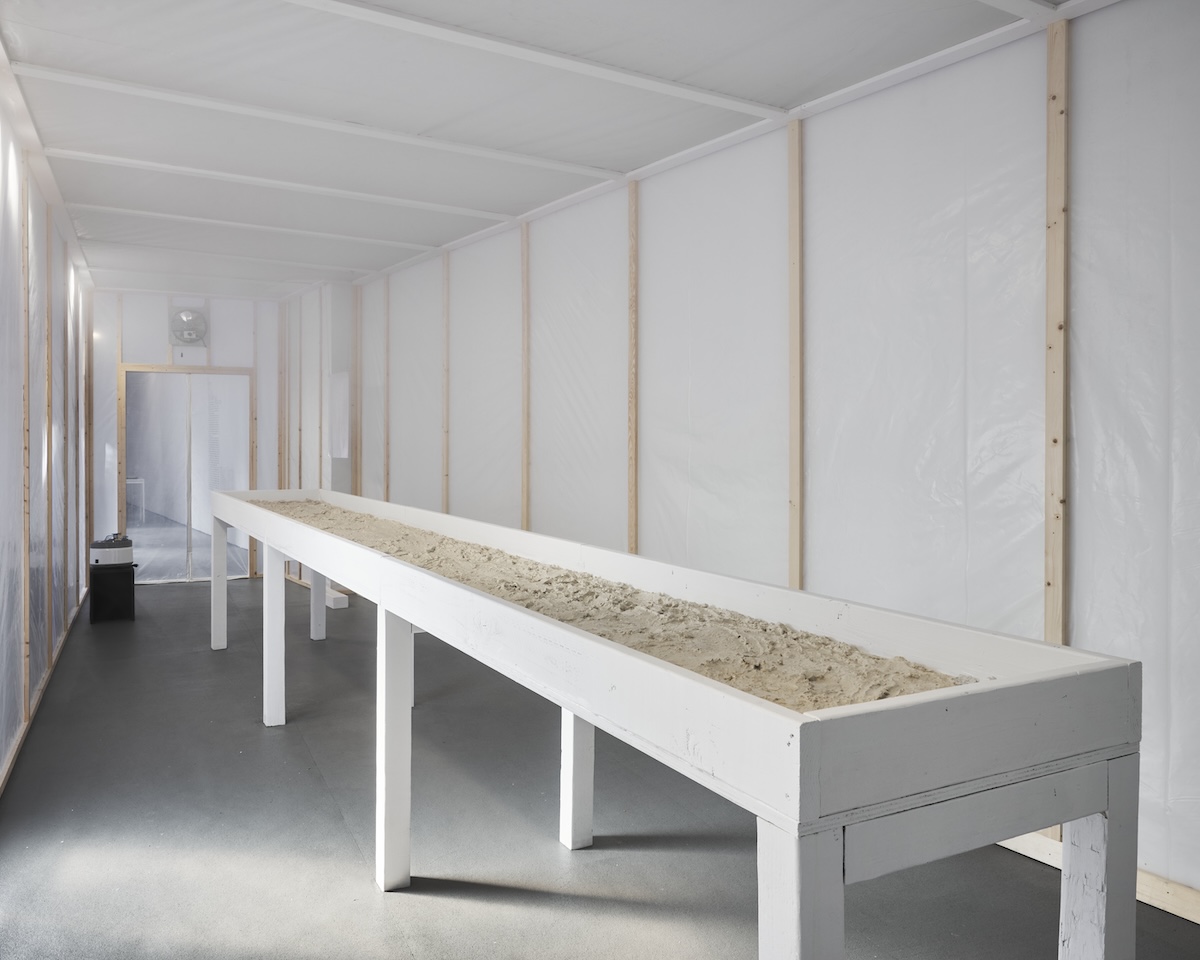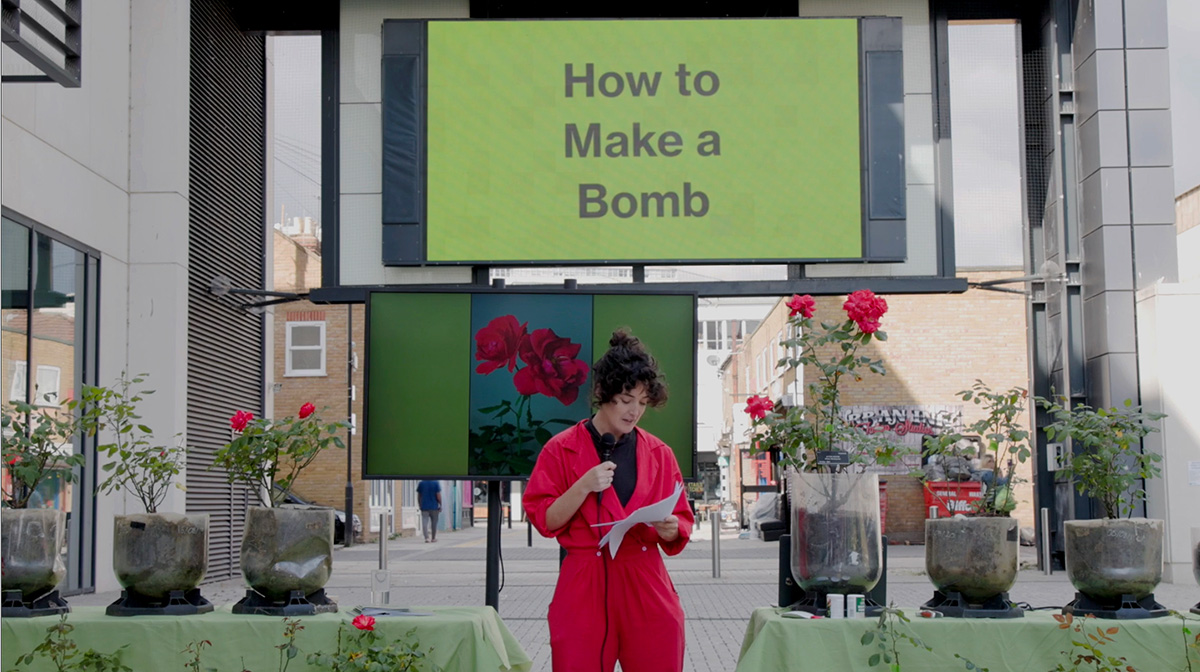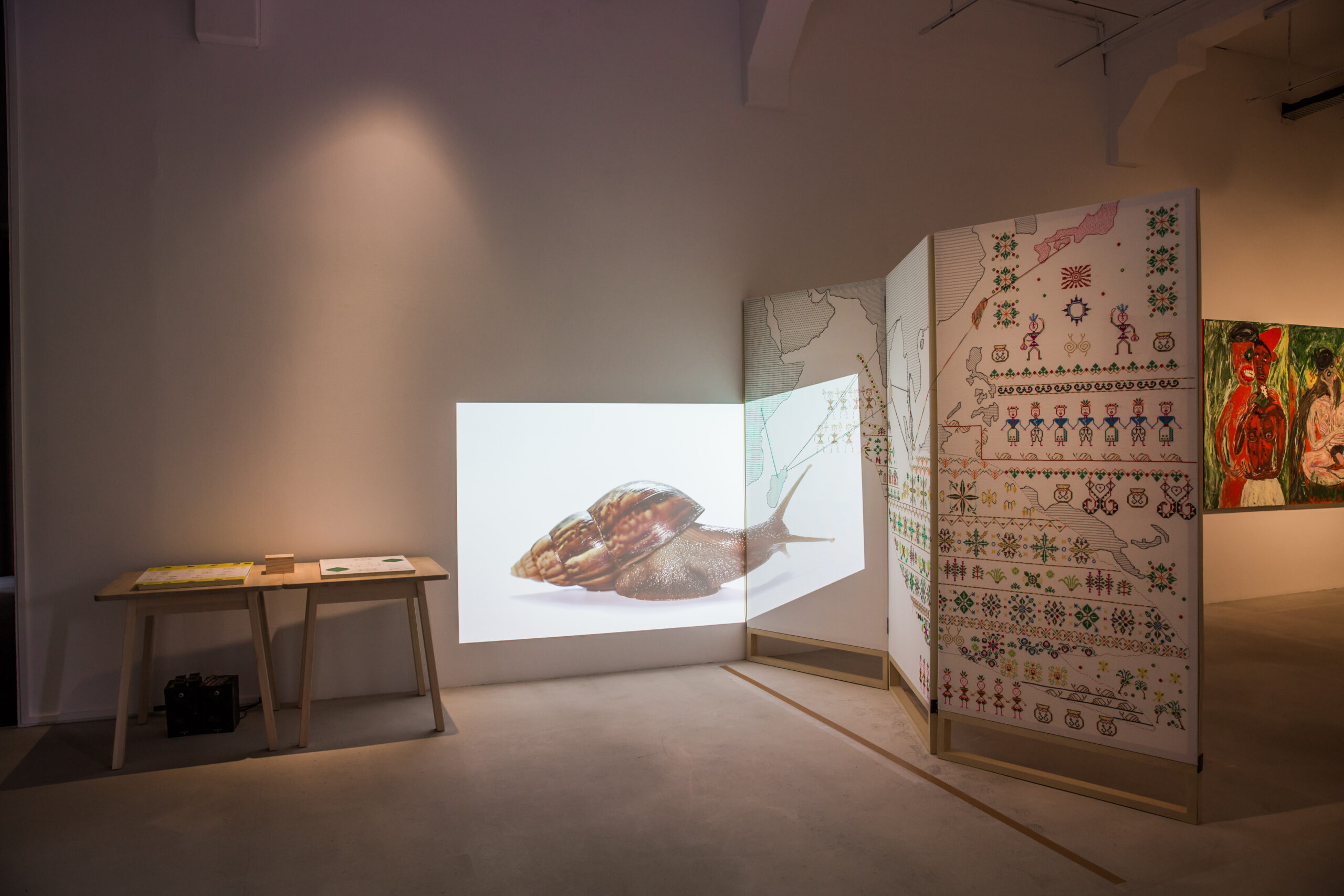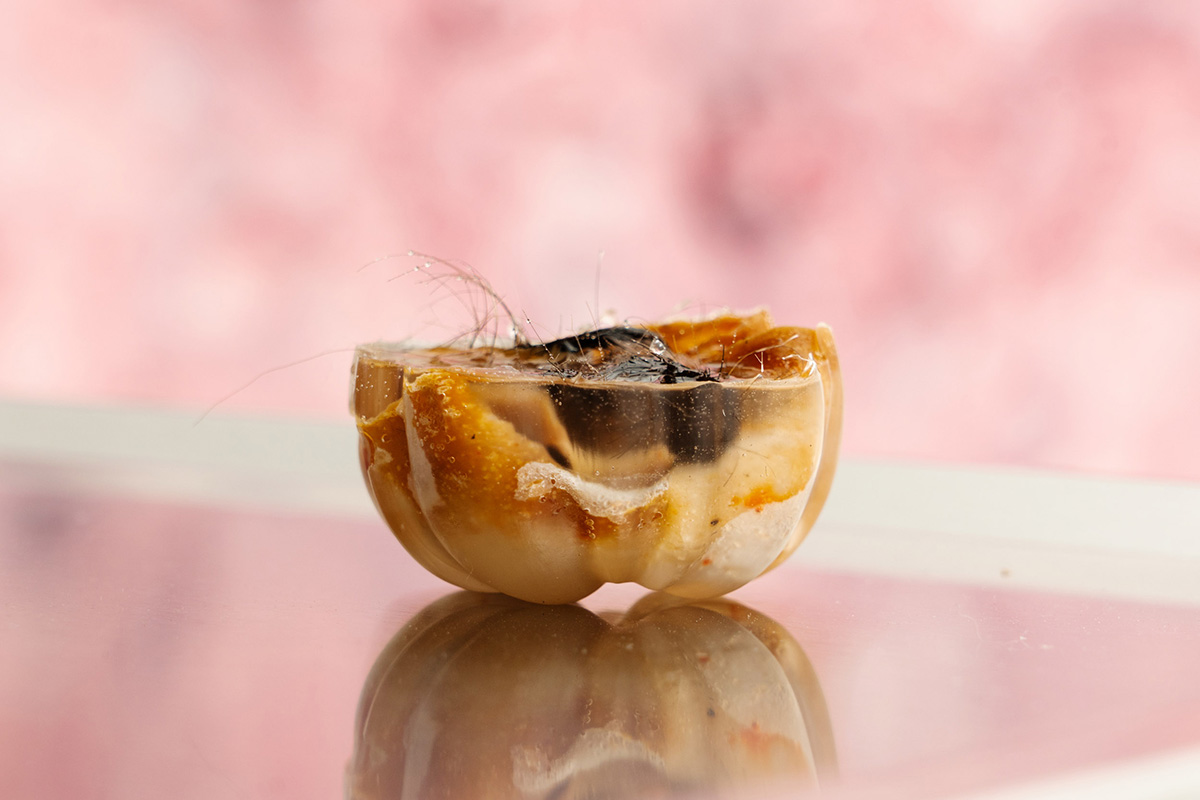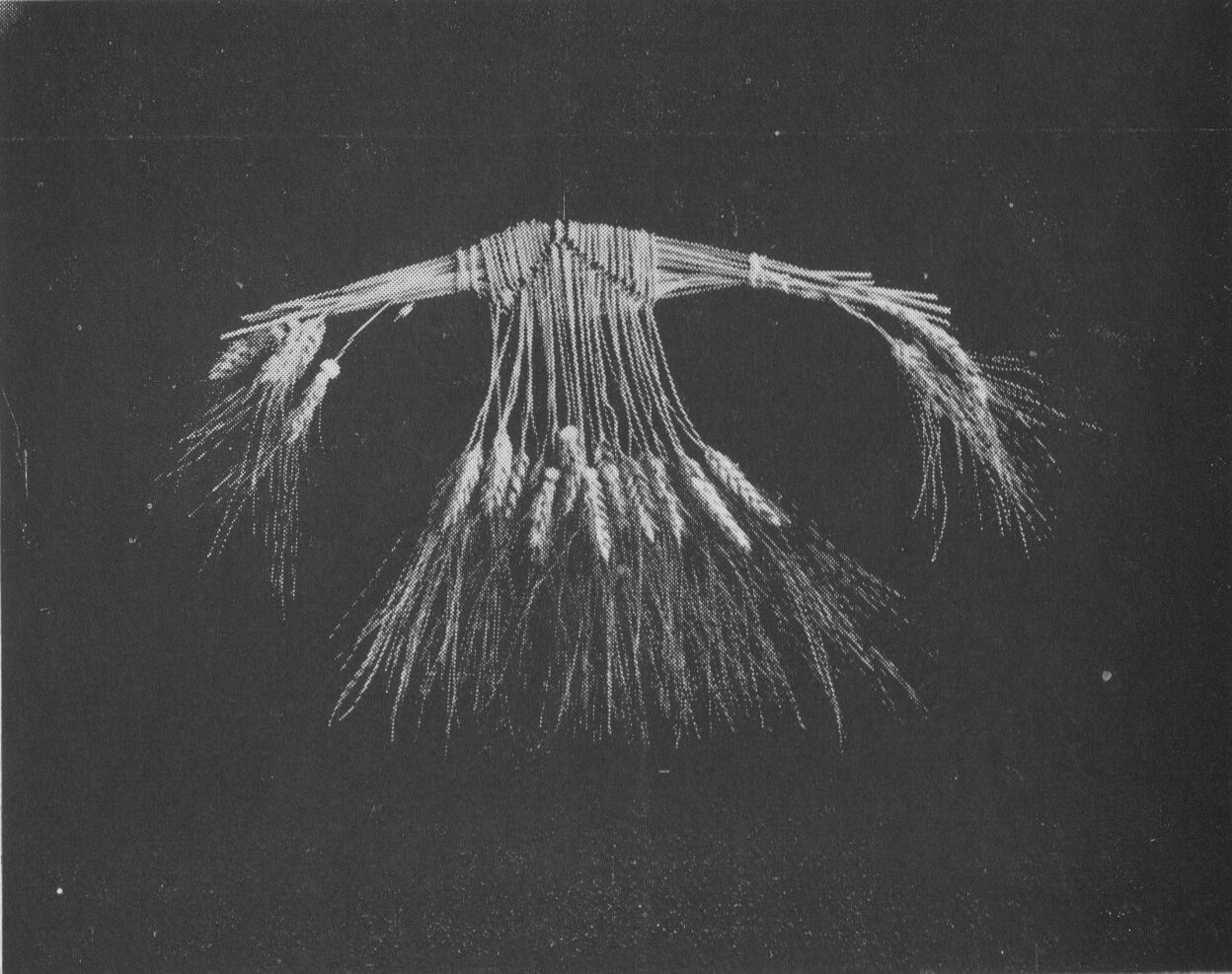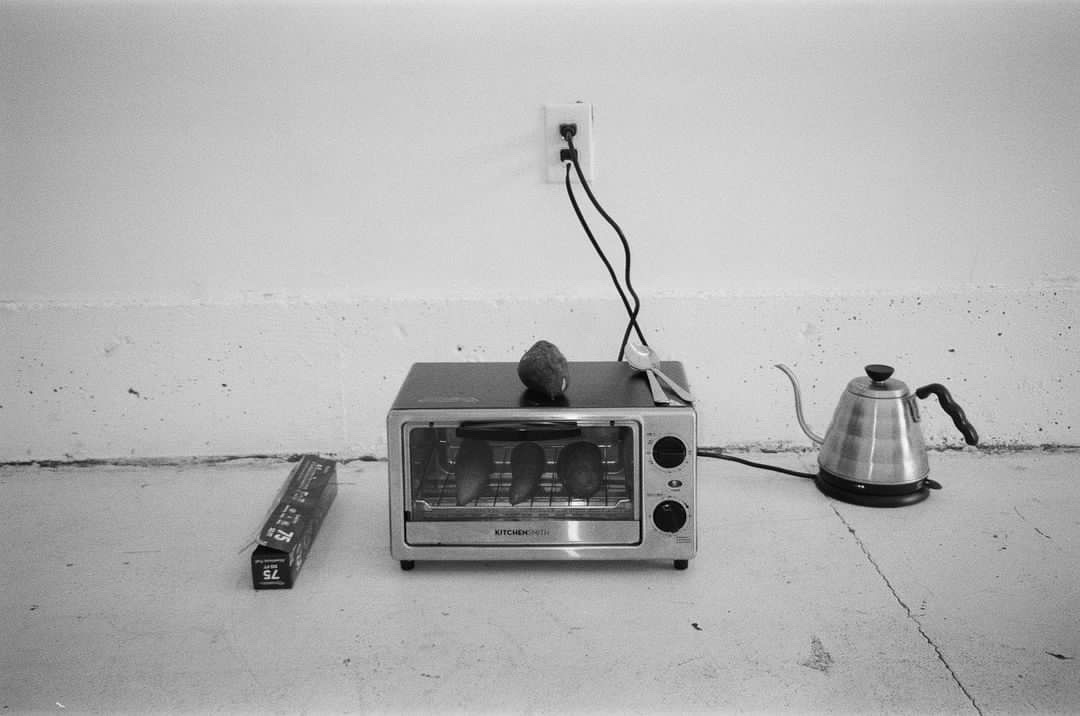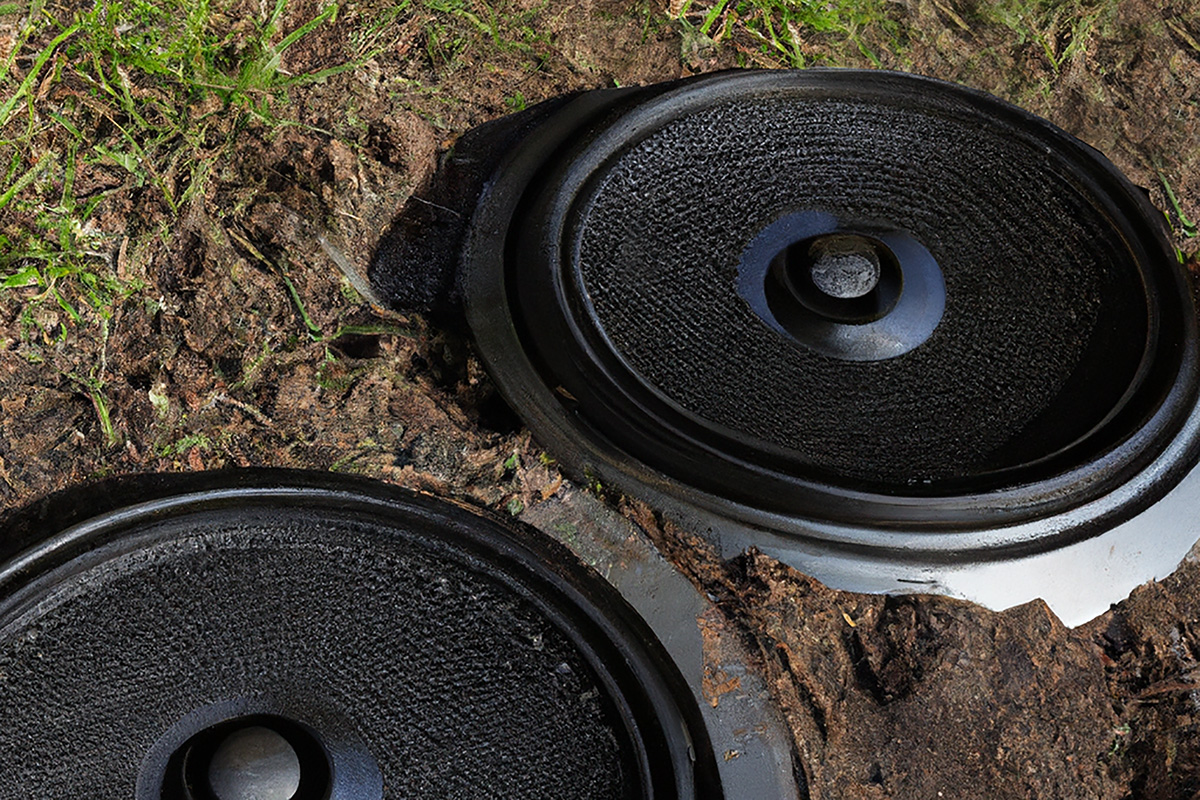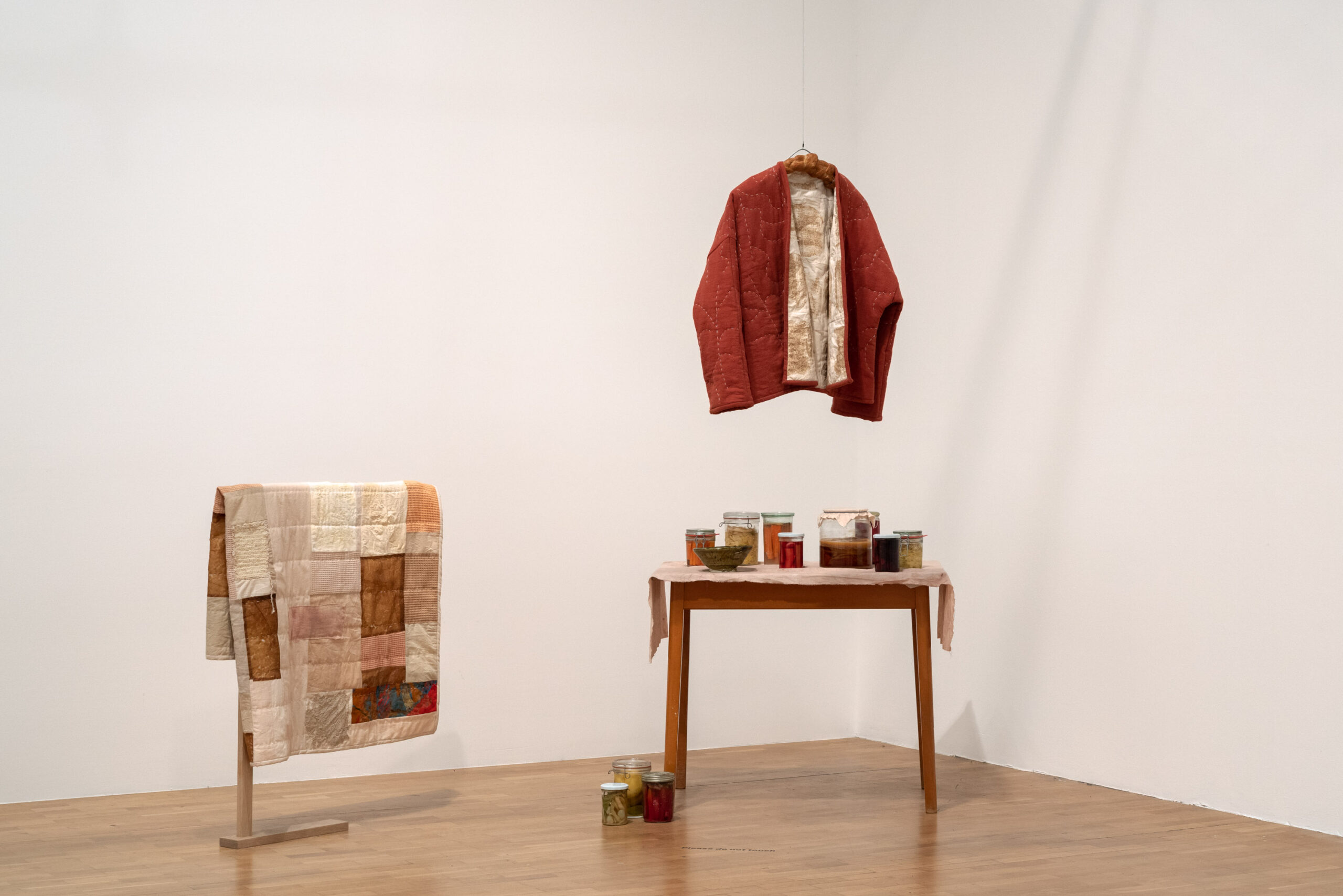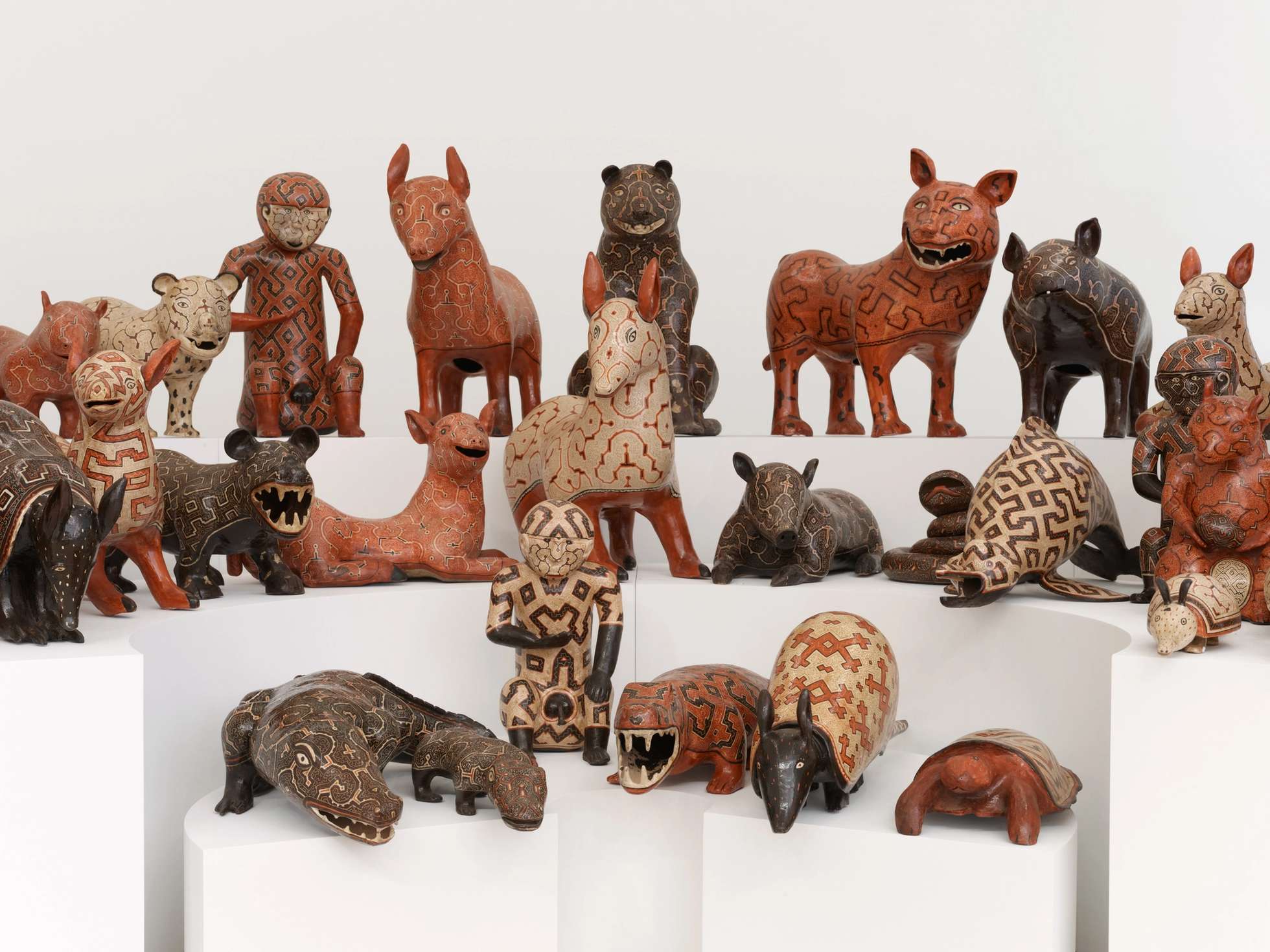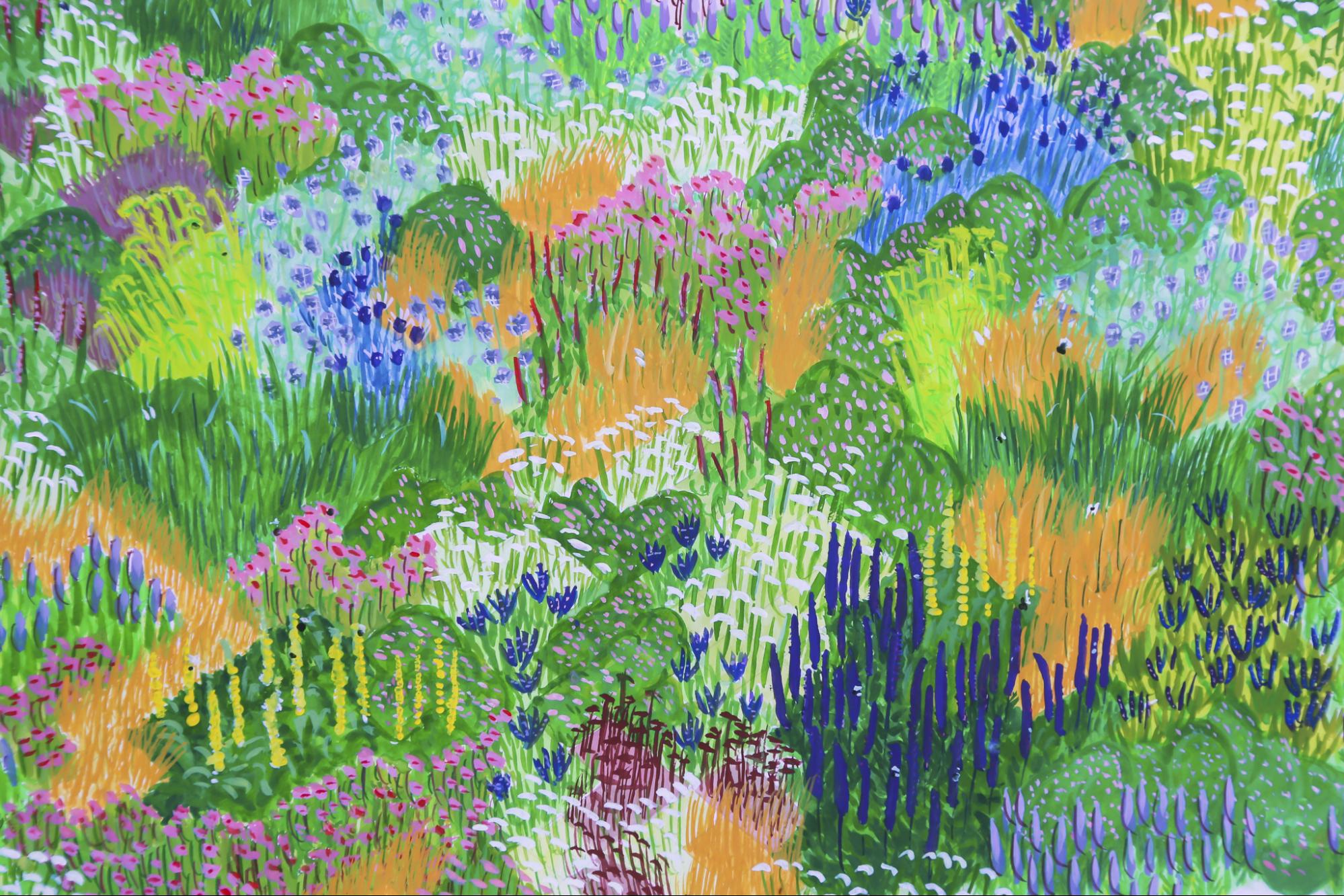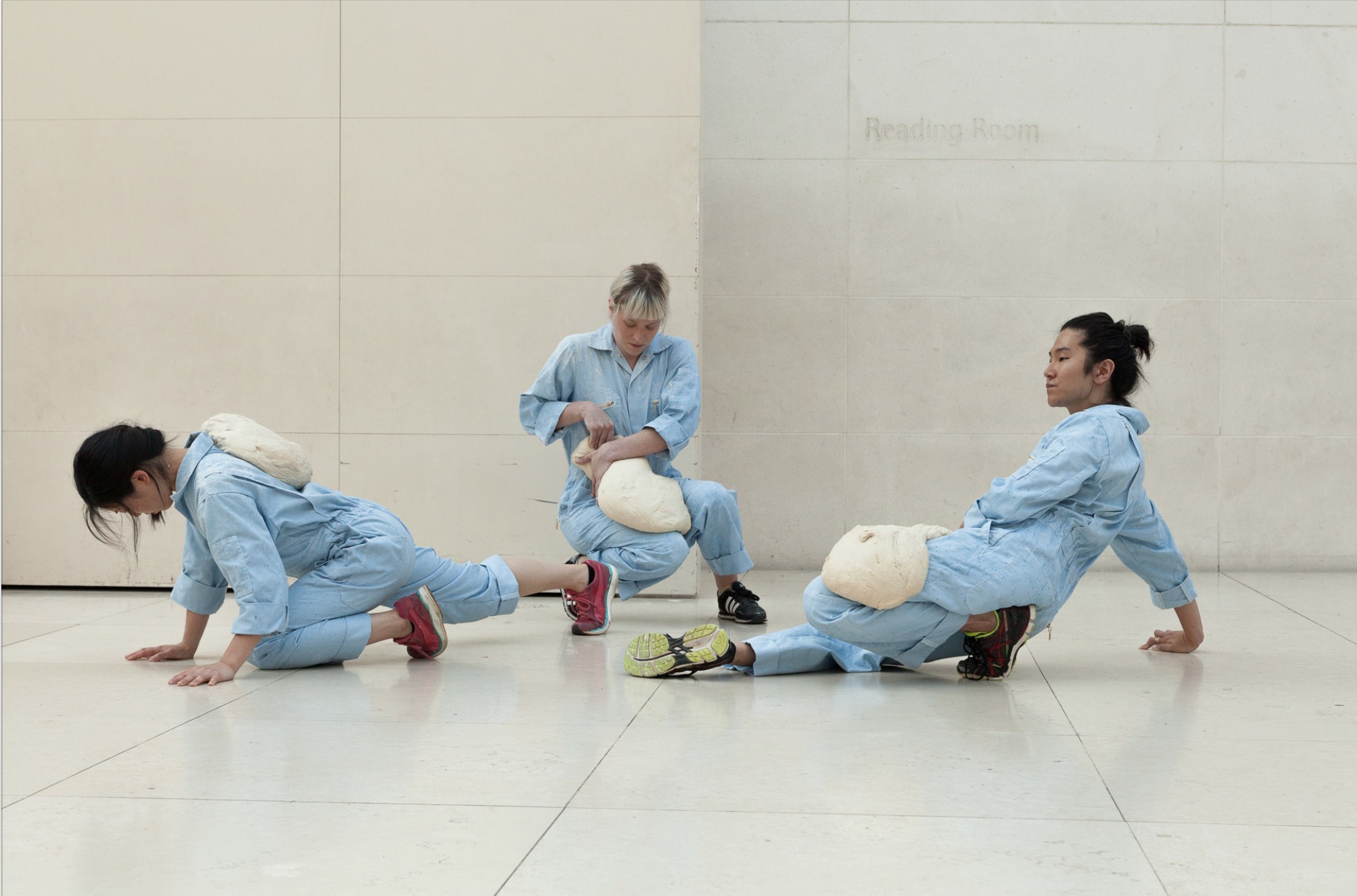What possibilities emerge from a grain-based society? This question has haunted me since 2020, when I had the pleasure of interviewing Amy Franceschini, founder of the artist collective Futurefarmers, for the Seeds issue of MOLD. With Of Furrows & Lands in Harps, an architectural installation to be unveiled this weekend at the Barns Art Center, the collective gives New Yorkers a glimpse at what might surface when people gather and make bread.
Of Furrows is Futurefarmers’ first large-scale public artwork installed in the United States, a continuation of their work as Flatbread Society which established an ancient grain field and bakehouse on a disused piece of Oslo waterfront. In our interview, when asked what ideas emerged from a decade tending to this ongoing work, Franceschini discussed the importance of ramping up the production of non-certified, heritage grains and investing in regional economies. “The infrastructure of a grain-based society, once rebuilt, helps animate the grain farmers, the brewers and the bakers, and it gets people in a dynamic around the mill,” she told me.
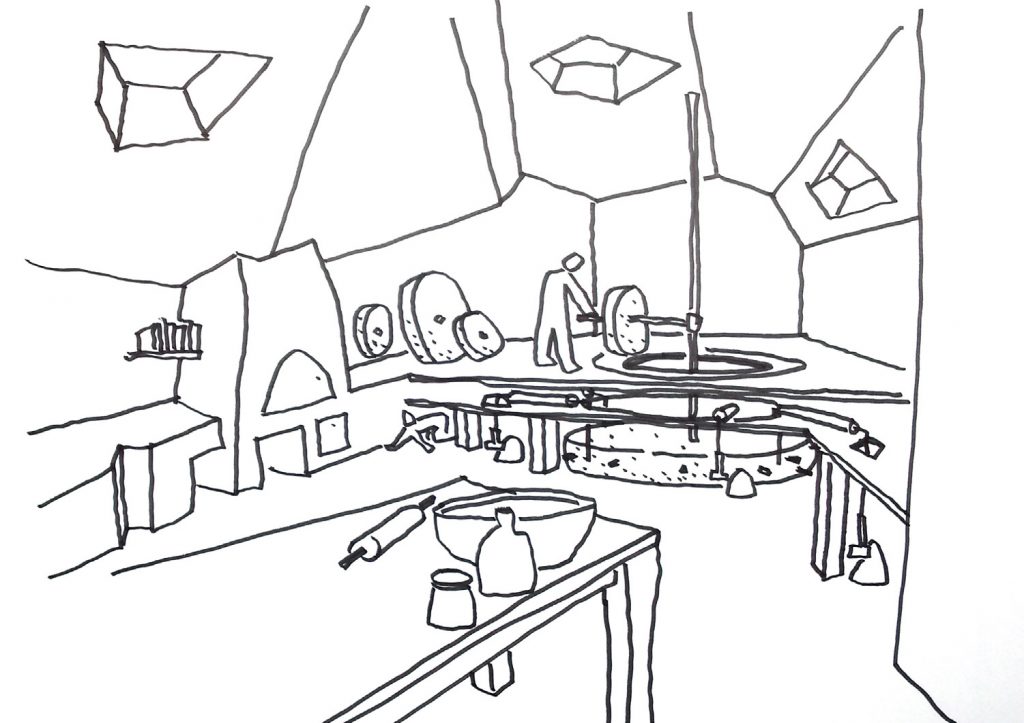
The installation of Of Furrows speaks to the possibilities of this dynamic. At the center of the artwork is an architectural structure designed by Belgian architect Lode Vranken which features a bakehouse, a meeting space, and an experimental sound sculpture called the Hum Stone which is carved from repurposed millstones. “Sound/music is a language that transcends the trappings of words or visual representation and urges us to commune in new ways,” says Franceschini. In a statement by the artists, the Hum Stone is described in detail:
“…a five-foot millstone sits upon a rotating table. A series of lines and dashes rotating out from the center are carved into the stone creating the “common” (or mothership) score for each composer to engage with. Under the table is a series of hanging arms, pipes and hooks that can be “programmed” in various ways by the composers/musicians.”
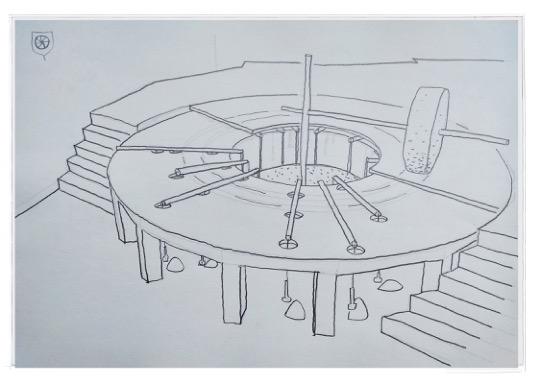
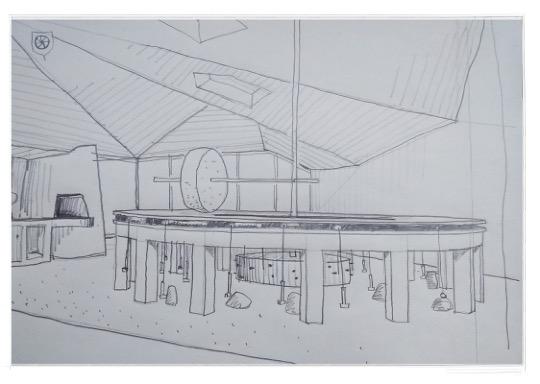
Working with instrument builders, a stone carver, a team of engineers and a machinist, the Futurefarmers conceived of the millstone as a tool and musical instrument to be unearthed over the course of three years. Each year, one of the commissioned works carved into the face and edges of three blank, 3-foot millstones, will be paired with the common score of the Hum Stone. This weekend the cycle begins with Walter Kitindu followed by Guillermo Galindo (2022) and wrapping with Annea Lockwood (2023). As part of the installation, each commissioned millstone is interred in the ground, covered by a grass enclosure sown with heritage grains provided by Don Lewis, the baker and farmer credited with revitalizing the grain movement in the Hudson Valley.
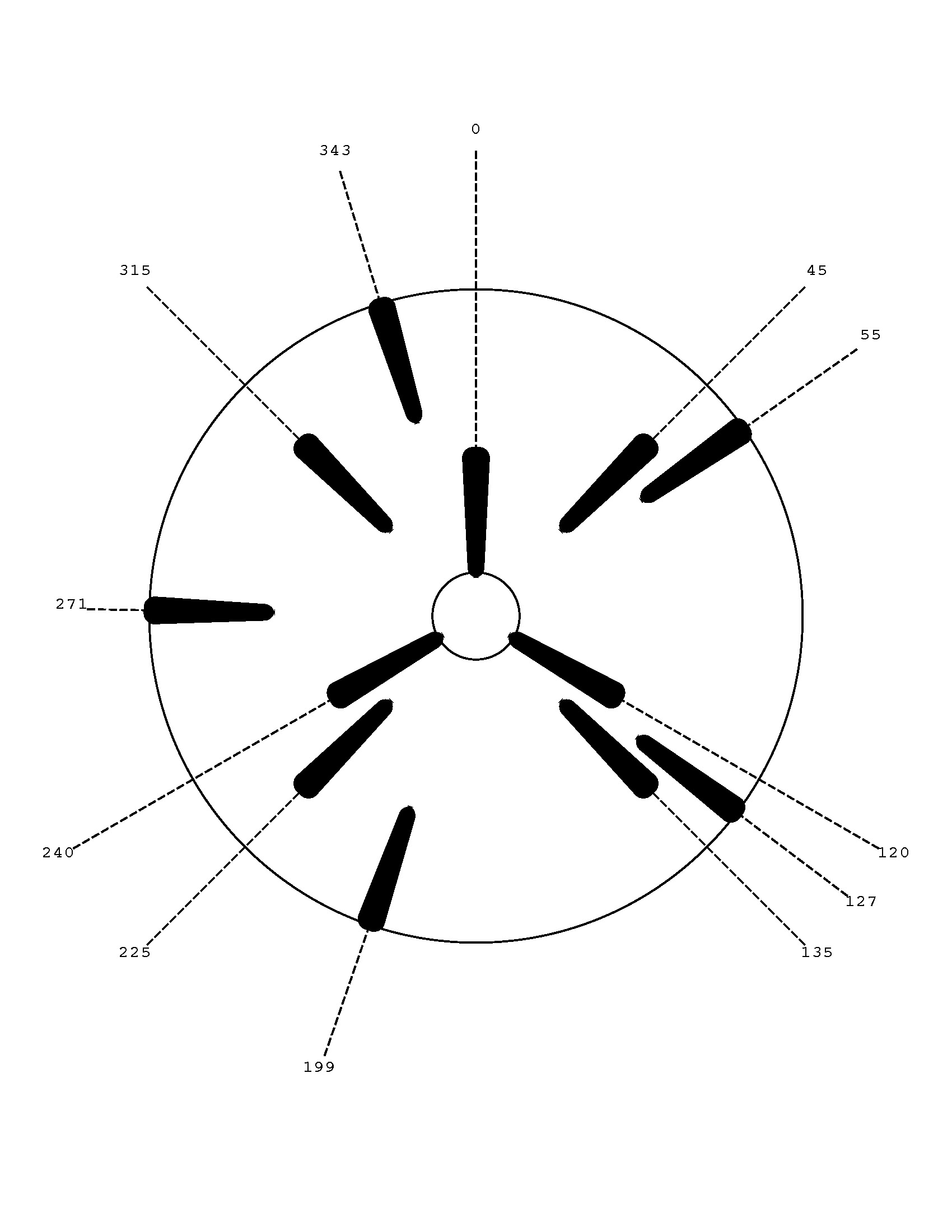
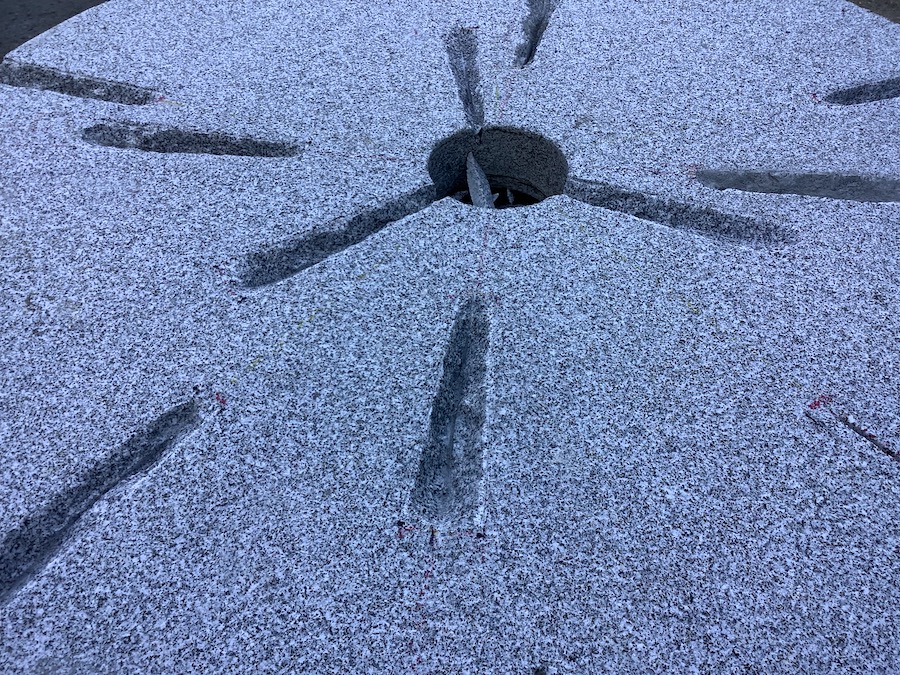
With the millstone as the cornerstone for building a grain-based society, the idea of creating a public tool for communing and conversation is at the heart of the project. “We look to the past of this land being the headquarters of IBM—the creator of tools that have massively changed the physical, social and psychological landscape; and beyond into space,” Franceschini explains, when asked about the ways that sound has informed her practice. “We call upon sound to attend to questions about these tools and our human desire to make tools.”
The critical importance of regional economies has come into sharp focus as disruptions in a globalized supply chain are affecting everything from food access (and pricing) to the production of consumer electronics. “In Norse mythology, the cosmos was turned by the one who turns the mill and through whom the timing of the seasons was ordered,” the artists note. In the same way, the turning of the Hum Stone will serve as a reminder that we can compose our own cosmologies, ordering our own realities away from things that no longer serve us and toward new imaginaries where grain can be an animating force for new ecologies.
The ground building ceremony for Of Furrows & Lands in Harps is October 9th from 3-5PM at Barns Art Center.
